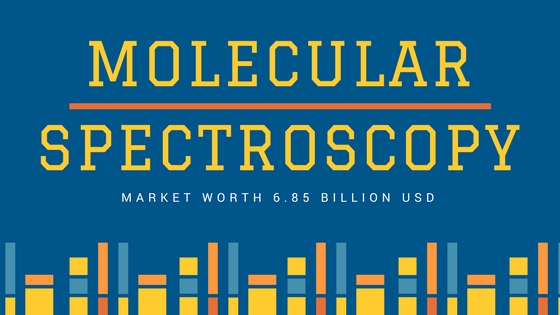The global molecular spectroscopy market is projected to reach USD 6.85 billion by 2022 from USD 4.98 billion in 2017, at a CAGR of 6.6%. Factors such as the application of molecular spectroscopy in environmental screening, growing focus on ensuring the quality of food products, the growth of the pharmaceutical and biotechnology industry, and technological advancements in molecular spectroscopy are driving the growth of the market during the forecast period.
On the basis of technology, the molecular spectroscopy market is segmented into Nuclear magnetic resonance (NMR) spectroscopy, UV-visible spectroscopy, infrared (IR) spectroscopy, near-infrared spectroscopy, color measurement spectroscopy, raman spectroscopy, and other technologies (fluorescence spectroscopy and hybrid spectroscopy). The raman spectroscopy segment is expected to grow at the highest CAGR of the global molecular spectroscopy market in 2017. The wide applications of this technique coupled with the availability of technologically advanced products are driving the growth of this segment.
Based on application, the molecular spectroscopy market is further segmented into pharmaceutical applications, biotechnology and biopharmaceutical applications, environmental testing, food and beverage testing, academic research and other applications. The pharmaceutical application segment is expected to register the highest CAGR during the forecast period. The growth is mainly due to the increased R&D in the pharmaceutical industry and increasing use of molecular spectroscopy at various stages of drug development process.
Download Free Brochure: https://www.marketsandmarkets.com/pdfdownload.asp?id=50034395
Geographically, the molecular spectroscopy market in the Asia Pacific region is expected to register the highest CAGR during the forecast period. Growth in this regional segment is due to factors such as environmental protection activities in China, growth in biomedical and medical research in Japan, booming biotechnology market in China, growing food industry, and food safety concerns in India.
As compared to mature markets such as the US and Europe, emerging markets such as China and India are expected to provide significant growth opportunities to companies operating in the molecular spectroscopy market. The life sciences industry in these countries is robust and is expected to contribute largely to the growth of the molecular spectroscopy market in the coming years. Many key industry players are strengthening their presence across the globe by establishing new facilities, R&D centers, and innovation centers. Also, rapid advances in technology have demonstrated the capability of terahertz spectroscopy in various healthcare applications. With major applications of terahertz technology in research studies for cancer diagnosis and quality control of pharmaceutical products, the demand for terahertz spectroscopy is expected to increase in the coming years.


